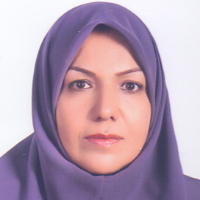Classification and Typology of Pottery Engraved under the Glaze (Sgraffiato) in Borujerd City (Based on Pottery Discovered from the Jameh Mosque Area and Layers of Old Urban Fabric)
According to the historical and geographical resources of the Islamic period, the city of Borujerd has always been regarded as an urban center since at least the first centuries of the Islamic era. The old mosque of “Atiq”, which is the oldest monument of the Borujerd city, has been identified by archaeological findings and architectural characteristics, to bear evidence of existence from the earliest Islamic centuries to the present time. In several stages of archaeological explorations in this mosque, which have mostly been carried out with the aim of renewal, many pieces of clay have been discovered in the campus of this ancient building which mainly date back to the middle-Islamic centuries. In recent years, with the implementation of some reconstruction projects and excavations in the old site of Borujerd city, some evidences of cultural and historical layers have been discovered which are indicators for the study of pottery in Islamic period. The present research, through applying classification and typology of pottery and studying the role of the carvings under the enamels of the excavated finds, aims at introducing the technical and artistic characteristics of pottery carvings under the Atiq mosque. Highlighting similarities and differences between the studied samples and the findings of pottery centers is another purpose of this study. The results of this study show that underglaze carving was the most widely applied method in pottery clay since 4-7 centuries AH in Islamic era. In terms of shape, the themes and techniques of glazed motifs are of considerable diversity and have many shared technical and artistic characteristics with other pottery areas of the same period, especially those of west of Iran.Borujerd, has been identified elsewhere as early as the second half of the third century in the Islamic era. Of the many names that Borujerd has been referred to during history, “Nahavand” and “Moon of Basreh” are the two most common ones. Since the fourth century and the formation of local governments, an increase of the role of western parts of Iran in the political-military developments could be seen. In the meantime, the city of Borujerd, took root and left a defining rule in the social and historical developments of that period due to being in the neighborhood of important cities such as Isfahan, Karaj Abodelf, Hamedan, and finally, Baghdad, which all flourished during the reigns of the Buyid and the Seljuk dynasties. The old texture of the Borujerd city has about 280 hectares of area. The central and primary core of the city is located in a range surrounded by the old Razan square, the Jameh Mosque of Soltani, Bazaar and the Jameh Mosque of Atiq. Despite the many works and signs of the existence of Islamic-period pottery in the area of study, including those in the old urban texture, layers and pottery, the area of Jameh Mosque has never been seriously and scientifically studied. In this regard, the present study was conducted with the aim of categorizing and classifying underglaze pottery carvings of the Jameh Mosque and the historical context of Borujerd, which count for a remarkable volume of glazed pottery and stained glass collection. It also intends to introduce the technical and artistic characteristics of this species in the study area. Therefore, this research is an attempt to answer questions such as: 1- What are the technical characteristics of the studied sgraffito pottery? 2. The artistic style of the studied samples is comparable to which well-known art patterns of this type of pottery? The present study was conducted by collecting information through library sources and field matching of field findings of this region with other regions.In the present research, the descriptive-analytical research method has been used. In this regard, after initial observation and through survey, the basis for sample classification was as follows: technical similarity, the subject of motifs, methods of glazing, and comparison with a variety of commonly studied species of this style in the first and the middle centuries which have been introduced, categorized and analyzed by researchers in the field and based on scientific research available in books and specialized publications. Therefore, the clay components of the index in terms of forms of dishes, diversity of enamels and the role of the classification and typology and their characteristics were analyzed.
- حق عضویت دریافتی صرف حمایت از نشریات عضو و نگهداری، تکمیل و توسعه مگیران میشود.
- پرداخت حق اشتراک و دانلود مقالات اجازه بازنشر آن در سایر رسانههای چاپی و دیجیتال را به کاربر نمیدهد.




